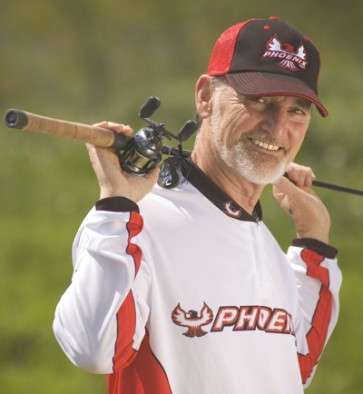
I get my first look at the James River on the Saturday before the Bass Pro Shops Bassmaster Northern Open there. I’m fishing it as a boater.
Today I drive from Ohio to the Phoenix Bass Boat factory in Tullahoma, Tenn., to pick up a 721 ProXP. Phoenix has been kind enough to let me use this superb boat for the Northern Opens. I’m thrilled.
The next day I drive to Richmond, Va. It’s possible I could get on the water Friday afternoon. However, I think I’ll be ahead to arrange tackle in the boat and study a map of the James River.
I’ve fished the tidal Potomac River a few times in the past. It has an abundance of milfoil and hydrilla. This aquatic vegetation is a major reason the Potomac is such a dynamic bass fishery.
The James River has neither of these grass species. Its primary cover is wood, pads, docks, duck blinds, pilings and anything that breaks the current.
The best insights I could dig up on the James River came from Cavin Young. He’s a local river rat that has been tournament fishing this tidal river for 35 years.
Young demonstrated his knowledge of tidal waters when he won the B.A.S.S. Federation Nation Mid Atlantic Divisional on Delaware’s Nanticoke River in September 2010. The tidal Nanticoke flows into Chesapeake Bay.
The bad news for those of us that don’t know the James River is that Young and other local bass anglers will be fishing the Northern Open there. Several of them are likely to be among the final 12, including the winner.
However, all the rainfall we’ve had this spring leaves the door open for visiting anglers like me. It has kept the river cooler than normal, and the bass have yet to go into their summer doldrums, Young points out.
This means that there should be plenty of bass relating to shallow cover. Many of them will be picked off with whatever any given competitor likes to throw at visible targets. Spinnerbaits, square-billed crankbaits and topwater offerings will surely draw strikes, Young claims.
“When the bass go deep in the summertime, they hold on planted brushpiles and stake beds,” Young says. “Those places are hard to find and give locals a huge advantage.”
Young believes that a majority of the anglers will run south and up the Chickahominy River during the James River Open. Many of the winning catches in tournaments this year have come from the Chickahominy.
“There was a big tournament on the James last weekend,” Young says. “Every twig, boat dock and lily pad in the Chickahominy had a boat on it.”
The Chickahominy has become a huge player on the James over the past four years or so thanks to an intense bass stocking program, Young says.
The Appomattox is the James River’s other major bass tributary. Although Young is most familiar with the Appomattox, he claims that it isn’t producing as many big bass as in the past. Then again, some fatties still live there.
A drawback with the Appomattox is that it is one of the most dangerous creeks to run. It has snags, logs and shallow bars in the middle of the river that you can’t see. And the bars change shape and location every year.
“In most of the other creeks, you’re safe if you run down the middle and stay closer to the outside bends in the turns,” Young says.
It’s common to see bass boats stuck on shallow bars waiting for a rising tide to set them free. And, if you venture up on a shallow flat when the tide is falling, you might find yourself in the same dilemma.
Young often plays chicken with the falling tide by fishing cover on shallow flats. He routinely jumps his boat on plane in skinny water and skims across flats that are too shallow to idle over.
“If your skag has paint on it, you’re not getting back where the fish are,” Young says.
It’s crucial that you consult the tide charts when fishing the James to avoid being literally stuck in the mud. The charts will also help you take advantage of the optimum late outgoing and early incoming tides when the water is low and moving.
“Fishing during a low tide is everything,” Young says.
He explains that minnows and other baitfish scatter into flooded cover when the tide is high. The bass have learned not to waste energy feeding then because their forage is too hard to find, Young believes.
When a falling tide pulls the water out of the cover, the baitfish come with it. This concentrates the baitfish and makes them much more vulnerable. The bass know this and go on a feeding spree.
“There will probably be some 16, 17, and 18-pound limits weighed in,” Young says. “But it’s hard to do that two days in a row at the James.”
Young believes it will take around 26 pounds to make the top 12 cut on Day Three and about 40 pounds to claim victory.
You may have noticed that I have a new blog photo. That’s because Phoenix Boats has generously provided a boat so I can fish the Northern Opens as a boater. To get my take on Phoenix Boats, visit my Facebook page.

